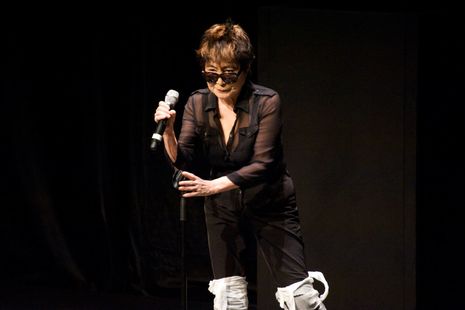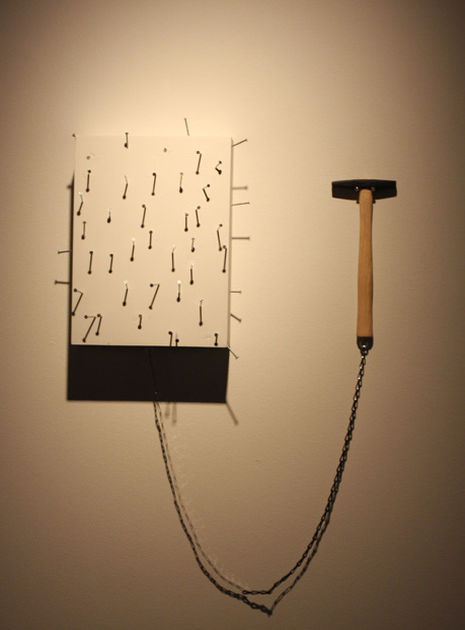Yoko Ono is an experimental art pioneer – who were the Beatles, again?
The Japanese artist has far more to offer than the femme fatale role that has been thrust upon her, argues Daisy Freeman

Plunging into a chiaroscuro world of imagination, art and music, Yoko Ono relinquishes her artistic control to the individual in her participatory exhibition in London. Yoko Ono: Music of the Mind explores the limitless boundaries of imagination and the synergy between the onlookers’ role as individual and collective beings. In the modern age, many condemned women have received retroactive apologies, from Spears to Anderson; not Yoko.
The trailblazer in the avant-garde artistic space is most noted for her Lennon-adjacent fame and her alleged hand in breaking up one of the world’s most temperamental bands. Her recent display at the Tate Modern aims to reshape her image as the socially inaugurated femme fatale in the public zeitgeist.
“Ono pushes the boundaries of our own personal conceptions and prejudices towards art”
Her art overwhelmingly explores the contrasts and synchrony of opposites: light and dark; black and white; reality and imagination; the individual and the collective. Ono is a multidisciplinary and multimedia artist who pushes the boundaries of our own personal conceptions and prejudices towards art. The collective and the individual are confronted with one another in simultaneity — at once all are engaging, trampling and hammering Ono’s works into existence. In her Painting to Hammer a Nail, the individual is asked to hammer a nail into a blank canvas. Over the progression of the exhibition’s lifespan, the piece becomes a monument to the artistic labour of its visitors. Stepping up to the piece, I wielded the hammer, looking for the perfect spot to make my mark before striking, hard. The shock from the tool reverberated in the otherwise still room. Some nails crashed to the floor as a result. Others displaced. Some remaining firm. Stepping back, I was confronted with the futility of my labour; my nail was lost. However, I found comfort and art in the symbol of cumulative creation.

The ephemerality of the individual mark is overcome through the art produced by communal imagination. This eternality of mutual creativity flowed within all of Ono’s works. A sky metaphor recurs, standing as a symbol for limitlessness, hope and freedom. Her childhood was profoundly shaped by her evacuation from Tokyo to the countryside during the war. She found solace in the sky, using it as a medium to explore her imagination. This connection is reflected within her art where these images are transmuted into wider explorations of imagination and peace.
The configuration of the sky as a consumable and uniting space is exemplified in the rhyme between the words ‘piece’ and ‘peace’. Ono’s artistic pursuit of peace and protest are underplayed in her wider public perception. As a modern day Dorothy Wordsworth, her influence and authorship over some of Lennon’s most famous songs, including Imagine and Happy Xmas (War is Over), has often gone unrecognised. Her Tate exhibition follows this thread of politicised art, culminating in her penultimate piece Add Colour (Refugee Boat). A symphony of blue shades are painted onto a blank refugee boat by participants. This offers a stark departure from the black and white visual landscape which is otherwise concurrent throughout the exhibition.
“Ono’s most recent display proves her place as a pioneering artist”
By the closing weeks of the exhibit, this display plunges you into a monochromatic world of deep sea blue. The vitality of the collective imagination and identity that she expresses throughout her work comes into action. The blank boat oscillates between the joint artistry of the public and the wider social concerns of displacement — a feeling interwoven in Ono’s life.
The shared imagination of humanity is transfigured into communal responsibility through Ono’s sequencing, exploration of colour and use of participation. Yoko Ono’s most recent display proves her place as a pioneering and forceful figurehead in the modern artistic space. Her original and refreshing utilisation of colour, language, sound and visualisation allows her work to transcend beyond temporal categorization into a universal exploration of self hood, community and responsibility.
 News / Clare Hall spent over £500k opposing busway 24 December 2025
News / Clare Hall spent over £500k opposing busway 24 December 2025 News / Caius mourns its tree-mendous loss23 December 2025
News / Caius mourns its tree-mendous loss23 December 2025 Comment / The ‘class’ of Cambridge24 December 2025
Comment / The ‘class’ of Cambridge24 December 2025 Comment / Yes, I’m brown – but I have more important things to say22 December 2025
Comment / Yes, I’m brown – but I have more important things to say22 December 2025 Interviews / Politics, your own way: Tilly Middlehurst on speaking out21 December 2025
Interviews / Politics, your own way: Tilly Middlehurst on speaking out21 December 2025










